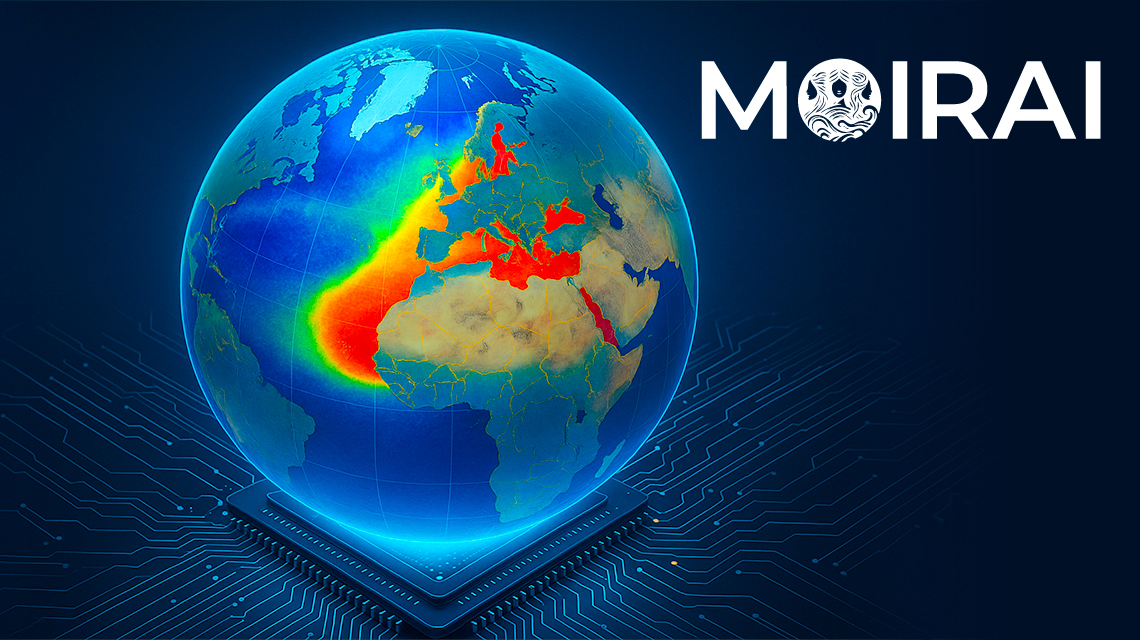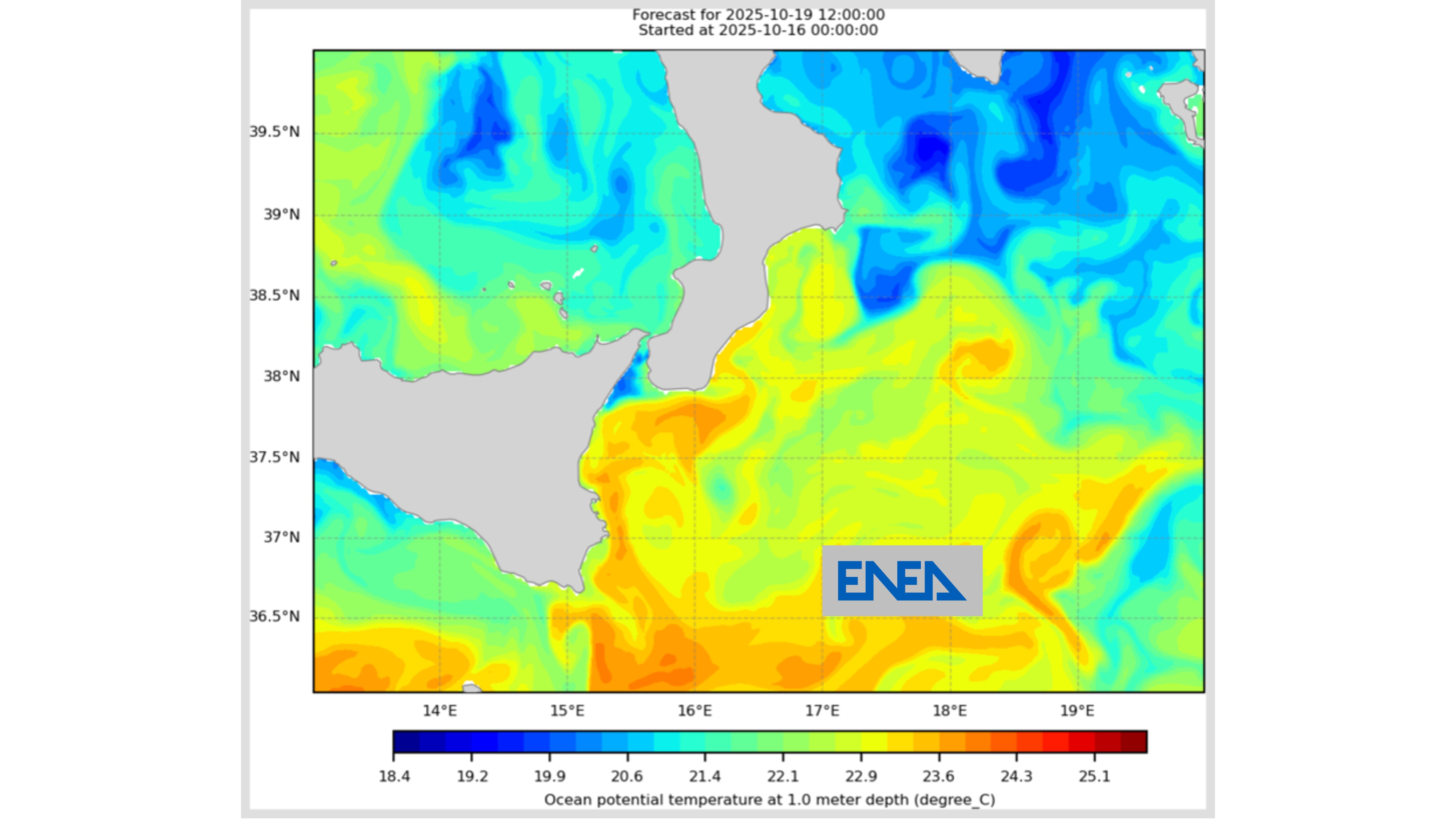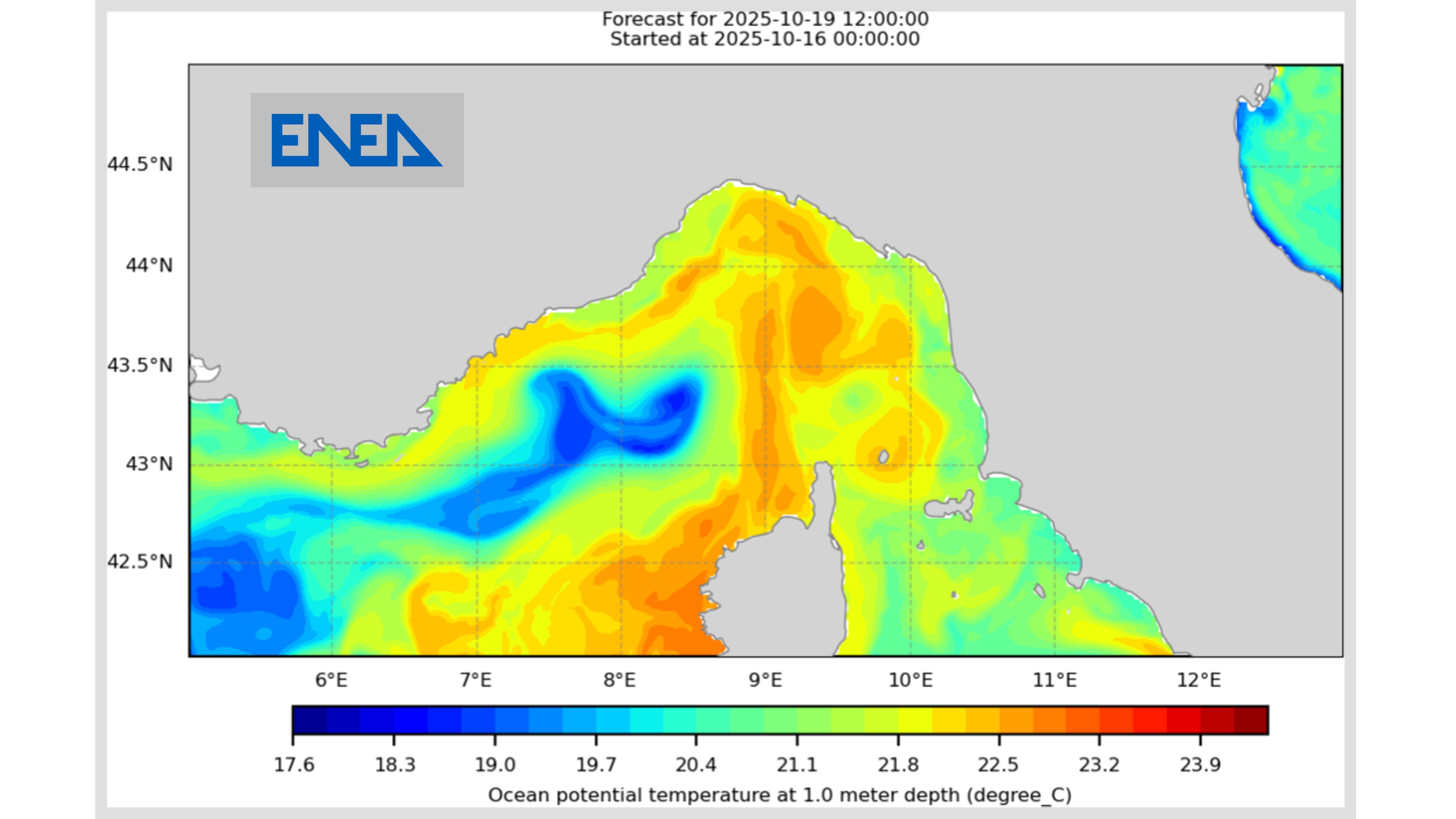Italian National Agency for New Technologies, Energy and Sustainable Economic Development

Environment ENEA, ocean models, supercomputing and AI to defy climate change
A new generation of ocean climate models at high spatial resolution, digital twins of the ocean-atmosphere system, applications of AI and supercomputing, together with simulations of future climate under different emission scenarios, for multidecadal projections of increasing accuracy. This is what will be realized in the context of the European project MOIRAI [1] by ENEA and 14 other European partners, coordinated by the National Technical University of Athens.
Funded by the Horizon Europe work-programme with about 4,5 million euros, the project aims at a better understanding of the ocean dynamics and of climatic and environmental events in the Mediterranean Sea, the North Sea, and the European Arctic Ocean, to support coastal climate change resilience.
MOIRAI, which is named after the three Greek goddesses who were personifications of destiny, will develop applications that range from seasonal forecasts to multidecadal climate projections, under different emission scenarios, with the purpose of advancing understanding of the oceanic processes and supporting adaptation and mitigation strategies.
Advanced techniques will be used to enhance existing models, mostly used in operational contexts, increasing the spatial resolution and refining the physical parameterizations in key regions, such as, for example, the Mediterranean Sea and the Baltic Sea. This will allow for a better description of the inter-basin exchanges, the dynamics in coastal areas, and the interaction with complex bathymetry. One of the state-of-the-art high-resolution models that will be further developed during the project is MITO, the model currently used in ENEA for short-term operational forecasting of the circulation of the Mediterranean Sea-Black Sea system. The new version of MITO will be suitable for climate integrations, while keeping the same high horizonal resolution (about 2 km) of the forecast implementation.
The Division Models, Observations and Scenarios for Climate Change and Air Quality has already developed GeoWeb, a thematic portal that allows for the visualization of hourly and monthly data concerning air quality, sea state (temperature, salinity, currents, waves) and climatic anomalies, with a focus on Italy and the Mediterranean.
“With a multidisciplinary approach and a long-term vision, MOIRAI will give a key contribution to the European effort to address climate risk and represents a new frontier in the regional and costal climate modelling” notes the ENEA project contact, Roberto Iacono, researcher of the Models and Climate Services Laboratory.
A strategic aspect of the project is its integration with two frontier initiatives aimed at supporting the digital and green transitions in Europe: Destination Earth, which seeks to develop a digital twin of the Earth system for the simulation of climatic and environmental processes, and the Digital Twin of the Ocean, which has the purpose of realizing an advanced digital representation of the marine environment, based on observations and numerical modelling. To ensure replicability of the scientific solutions and support climate policies in all coastal regions of Europe, in the context of the project will be realized REASSHORE[2]a modular and interoperable platform designed to integrate existing and future digital infrastructures.
“ENEA’s participation to the project represents a strategic opportunity to exploit and enhance the advanced skills in the field of ocean modelling developed in our Models and Climate Services Laboratory, ensuring at the same time continuity of a long-term research line supported by funding from the “Accordo di Programma MISE-ENEA (Ricerca di Sistema Elettrico)”, numerous European projects, and national initiatives related to the PNRR”, concludes Gianmaria Sannino, head of the Division Models, Observations and Scenarios for Climate Change and Air Quality.
Besides developing innovative climate models for the Mediterranean basin and verifying their reliability in the context of coastal applications, ENEA will contribute to the scientific coordination, to the monitoring of the project activities, and to the dissemination of the scientific results, supporting the formulation of recommendations for the climate policies.
Per approfondimenti:
MITO, curated by Massimiliano Palma and Andrea Orlandi, ENEA - Models and Climate Services Laboratory.
Ocean simulation sea state of the Mediterranean Sea (temperature, salinity, currents, and waves)
Atmospheric simulation showing hourly transport of O3, NO2, SO2, PM10 and PM2.5 over Italy
Climate analysis showing monthly anomalies of temperature and cumulated precipitation
Notes
[1] MOIRAI - Multiscale Ocean Models and Information for Climate Risk Assessment and Impact Mitigation
[2] REASSHORE - Resilience and Adaptation Strategies Selection Hub for Ocean Risks Assessment and End-Users Feedback


